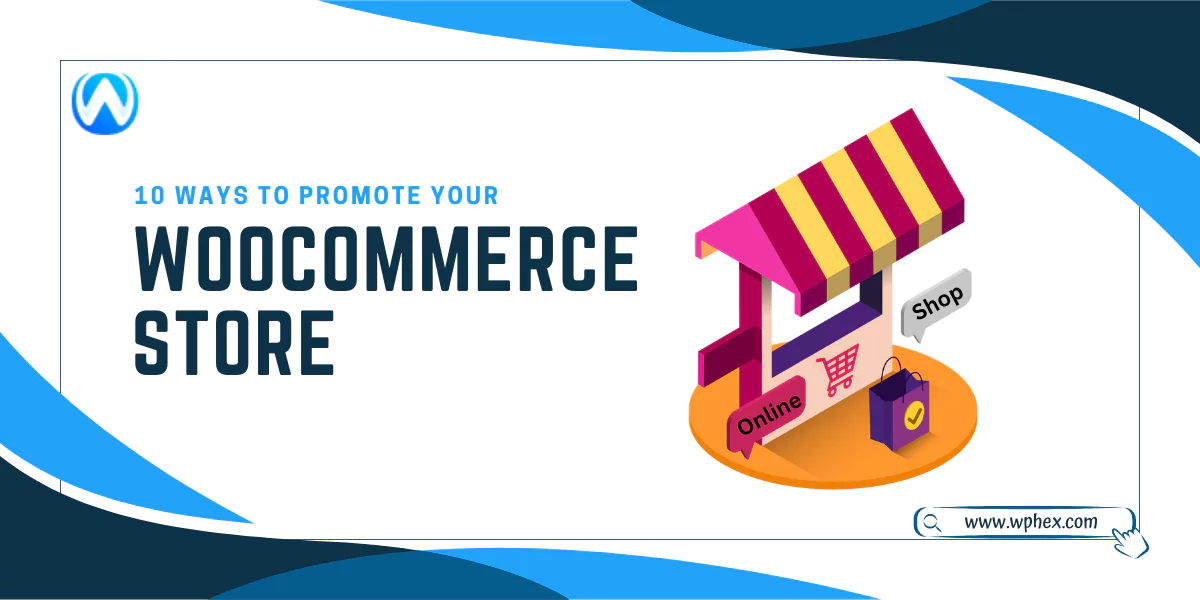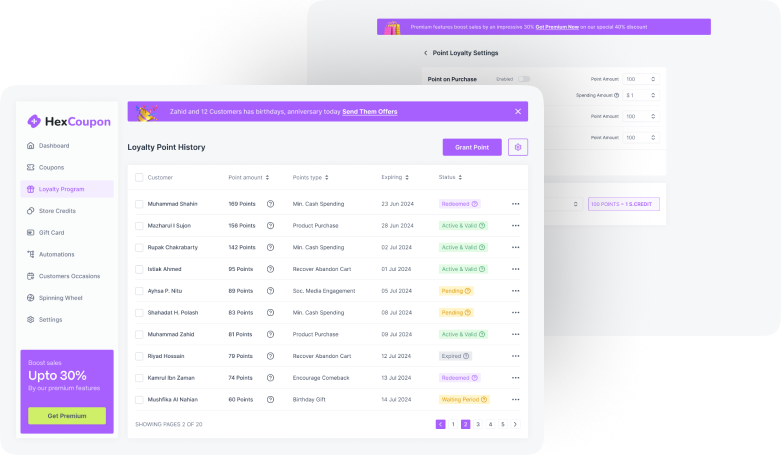
The evolution of e-commerce has been nothing short of revolutionary, beginning with the first online shopping session in 1994. However, the most significant progress in this sector emerged around 2010-2011, with a notable statistical leap observed in 2014.
According to Sleeknote research, e-commerce generated $1.3 trillion in total sales in 2014, a prediction made by Statista analytics in 2010. The sector has consistently demonstrated geometric growth from 2014 to 2020, validating these early predictions.
By 2022-2023, Statista projected that the annual global revenue from online shops could reach an astounding $12.1 trillion. This meteoric rise is mirrored in consumer behavior, with Oberlo statistics indicating that approximately 63% of modern shoppers prefer to make purchases online.
This shift to e-commerce is driven by several compelling factors, as outlined by the Nielsen Norman Group. The ease of use and convenience offered by online shopping platforms are unparalleled.
Consumers can purchase goods without leaving their homes, with e-commerce websites providing detailed product descriptions, high-quality images, and essential physical characteristics.
The global reach of online shops allows customers to order products from other countries effortlessly, supported by features like online chats and 24/7 customer support. Ultimately, the success of an online store hinges on a well-thought-out marketing strategy.
Despite the comprehensive tools provided by WooCommerce, businesses must focus on effective e-commerce promotion to thrive in this competitive market. By leveraging the right technologies and approaches, online retailers can cater to their target audiences and achieve sustainable growth.
10 Ways to Promote Your WooCommerce Store
Leverage Social Media Marketing

Understand who your customers are and which social media platforms they frequent. This will help you tailor your content and campaigns to the right audience. Share high-quality images, videos, and posts that showcase your products and brand. Use storytelling to connect with your audience on a deeper level.
Respond to comments, messages, and reviews promptly. Engaging with your audience builds trust and encourages customer loyalty. Invest in paid advertising on platforms like Facebook, Instagram, and Pinterest.
These ads can be highly targeted to reach specific demographics, interests, and behaviors. Organize giveaways and contests to increase engagement and attract new followers. Ensure the prizes are relevant to your audience and encourage participants to share your posts.
Partner with influencers who align with your brand. Influencers can help you reach a wider audience and add credibility to your products. Incorporate popular and relevant hashtags in your posts to increase visibility.
Research trending hashtags in your niche and use them to reach a broader audience. Maintain a consistent posting schedule to keep your audience engaged. Use social media management tools to plan and schedule your posts in advance.
Encourage customers to share their experiences with your products on social media. Reposting user-generated content can build community and trust.
Regularly review your social media analytics to understand what’s working and what’s not. Adjust your strategies based on the insights to improve your social media performance.
Optimize Your Store For Search Engines

Identify the keywords and phrases your target audience is using to search for products similar to yours. Use tools like Google Keyword Planner, Ahrefs, or SEMrush to find relevant keywords with high search volume and low competition.
Incorporate your primary keywords naturally into your product titles and descriptions. Ensure that they are compelling and informative, providing clear benefits and features of the product. High-quality images not only attract customers but also improve SEO.
Use descriptive filenames and add alt text with relevant keywords to help search engines understand the content of your images. A fast-loading website is crucial for both user experience and SEO.
Optimize images, leverage browser caching, and use a content delivery network (CDN) to improve your site’s speed. Ensure your WooCommerce store is mobile-friendly. Use responsive design techniques to provide a seamless shopping experience on all devices, which is a critical factor for SEO rankings.
Regularly publish unique and valuable content on your blog that is relevant to your products and industry. This helps in attracting and engaging visitors while also improving your store’s SEO. Ensure your URLs are short, descriptive, and include relevant keywords.
Avoid using complex strings of numbers and symbols. Use internal links to connect related products and content within your store. This helps search engines understand the structure of your site and improves user navigation.
Earn high-quality backlinks from reputable websites to improve your store’s authority and search engine rankings. You can achieve this through guest blogging, partnerships, and creating shareable content. Write compelling meta titles and descriptions for each product page, incorporating relevant keywords.
These tags help search engines understand the content of your pages and influence click-through rates from search results. Implement structured data markup (schema) to help search engines understand your content better.
This can enhance your search engine listings with rich snippets, such as product reviews and ratings, which can increase click-through rates.
Use tools like Google Analytics and Google Search Console to monitor your store’s performance. Analyze the data to understand what’s working and where improvements are needed.
Utilize Email Marketing Campaigns

Focus on growing a list of engaged subscribers who are genuinely interested in your products. Use sign-up forms, pop-ups, and incentives like discounts or free shipping to encourage visitors to subscribe.
Divide your email list into segments based on factors such as purchase history, browsing behavior, and demographic information. This allows you to send more personalized and relevant emails to each group. Craft attention-grabbing subject lines that entice recipients to open your emails.
Keep them short, relevant, and include a sense of urgency or curiosity. Ensure your emails are responsive and look great on all devices, including smartphones and tablets. Use a clean layout, clear fonts, and appropriately sized images.
Personalization goes beyond using the recipient’s name. Tailor the content based on their preferences, past purchases, and behavior. Personalized emails have higher open and click-through rates. Focus on delivering value in your emails.
Share exclusive offers, useful tips, product recommendations, and engaging content that resonates with your audience. Set up automated email sequences, such as welcome series, abandoned cart reminders, and post-purchase follow-ups.
Automation helps you stay connected with your customers at the right times without manual effort. Every email should have a clear and compelling CTA that guides the recipient towards the desired action, whether it’s making a purchase, signing up for a webinar, or reading a blog post.
Conduct A/B tests to determine what works best for your audience. Test different subject lines, email designs, CTAs, and sending times.
Use the insights to continually optimize your campaigns. Monitor key email marketing metrics such as open rates, click-through rates, conversion rates, and unsubscribe rates. Analyzing these metrics helps you understand your audience’s preferences and improve your future campaigns.
Include customer reviews, testimonials, and user-generated content in your emails to build trust and credibility. Social proof can significantly influence purchase decisions. Use time-sensitive offers and highlight limited stock availability to create a sense of urgency.
This can encourage subscribers to act quickly and make a purchase. Send exclusive discounts, early access to new products, or special rewards to your loyal customers. Showing appreciation keeps them engaged and encourages repeat purchases.
Create Engaging Content with a Blog

Understand what topics and content types your target audience is interested in. Use tools like Google Analytics, social media insights, and customer feedback to identify popular themes and questions. Organize your blogging efforts with a content calendar.
Plan your posts in advance, ensuring a consistent publishing schedule that keeps your audience engaged. Focus on providing valuable and informative content that addresses your audience’s pain points and interests.
Offer solutions, tips, and insights that help your readers solve problems or learn something new. Craft compelling headlines that grab attention and encourage clicks. A good headline should be clear, concise, and convey the value of the content.
Enhance your blog posts with high-quality images, videos, infographics, and other visual elements. Visual content makes your posts more engaging and easier to digest. Use relevant keywords naturally throughout your blog posts to improve your search engine rankings.
Optimize your meta titles, descriptions, headers, and images with appropriate keywords. Engage your readers by incorporating storytelling into your blog posts. Share your brand’s story, customer success stories, and personal experiences to create a deeper connection with your audience.
Prompt your readers to engage with your content by asking questions, encouraging comments, and inviting them to share your posts on social media. Respond to comments to foster a sense of community. Ensure your content is practical and actionable.
Offer step-by-step guides, how-to’s, and tips that readers can implement immediately to achieve results. Invite industry experts, influencers, and other bloggers to write guest posts on your blog.
This brings fresh perspectives and can help attract their audience to your site. Share your blog posts on your social media channels, in email newsletters, and through other marketing channels. Use compelling visuals and snippets to attract clicks. Use analytics tools to track the performance of your blog posts.
Analyze metrics like page views, time on page, bounce rate, and social shares to understand what resonates with your audience and refine your content strategy.
Each blog post should have a clear call to action (CTA) that guides readers toward the next step, whether it’s signing up for your newsletter, exploring related products, or downloading a free resource.
Offer Limited-Time Discounts And Promotions

Define what you want to achieve with your promotions, whether it’s increasing sales, clearing out inventory, attracting new customers, or rewarding loyal ones. Clear objectives will guide your promotional strategy. Select the type of discount that best suits your goals and audience.
Common options include percentage discounts, fixed amount discounts, buy-one-get-one-free (BOGO) offers, free shipping, and bundle deals. Emphasize the limited-time nature of your promotions to encourage immediate action.
Use phrases like “Hurry, ends soon!” or “Limited time offer!” to create urgency and drive quick decisions. Plan your promotions around holidays, seasonal events, and special occasions relevant to your audience.
Black Friday, Cyber Monday, Valentine’s Day, and back-to-school season are examples of prime opportunities for promotions. Create unique, easy-to-remember promotional codes for your discounts. Promote these codes across your marketing channels to ensure customers are aware of the offer.
Make your discounts and promotions prominently visible on your homepage, product pages, and banners. Use eye-catching graphics and clear messaging to draw attention to the offers. Notify your email subscribers about your limited-time promotions.
Craft compelling email campaigns with enticing subject lines, attractive visuals, and clear CTAs to drive traffic to your store. Announce your promotions on social media platforms like Facebook, Instagram, Twitter, and Pinterest.
Use engaging visuals, stories, and countdown timers to generate excitement and shareability. Partner with influencers to spread the word about your promotions. Influencers can reach a broader audience and add credibility to your offers.
Use exit-intent popups to capture potential customers who are about to leave your site. Offer them a special discount or promotion to encourage them to complete their purchase. Monitor the performance of your promotions using analytics tools.
Track key metrics such as sales, conversion rates, and customer feedback to understand what works best and refine your future promotional strategies. Reward your loyal customers with exclusive discounts and promotions.
This not only shows appreciation but also encourages repeat purchases and strengthens customer relationships. Implement retargeting ads to remind visitors who didn’t complete their purchase about your limited-time offers. These ads can be highly effective in converting abandoned carts into sales.
Implement a Referral Program

Determine what you want to achieve with your referral program, such as increasing customer acquisition, boosting sales, or enhancing brand awareness. Clear goals will guide the design and execution of your program.
Offer attractive incentives that motivate both the referrer and the referred customer to participate. Common incentives include discounts, store credits, free products, or exclusive offers. Use a referral program plugin compatible with WooCommerce to automate and manage your referral program.
Popular options include ReferralCandy, Referral Rock, and YITH WooCommerce Affiliates. Design your referral program with straightforward rules that are easy to understand. Ensure customers know how they can earn rewards, what actions are required, and any terms and conditions.
Actively promote your referral program across your website, social media channels, email newsletters, and even during the checkout process. Use eye-catching banners and clear CTAs to encourage participation.
Make it simple for customers to refer others by providing multiple sharing options, such as social media sharing buttons, email invites, and unique referral links that can be copied and shared easily. Allow customers to customize their referral messages to make them more personal and authentic.
Personalized messages are more likely to resonate with potential new customers. Use your referral program plugin to track referrals and automatically reward both the referrer and the referred customer. Ensure rewards are delivered promptly to maintain trust and satisfaction.
Highlight testimonials from customers who have benefited from your referral program. Positive reviews and success stories can encourage others to participate. Regularly review the performance of your referral program using analytics tools.
Track metrics such as the number of referrals, conversion rates, and the overall ROI. Use this data to identify areas for improvement. Communicate with your referrers and referred customers to build relationships and gather feedback.
Send thank-you emails, updates about their referral status, and additional incentives to keep them engaged. Based on feedback and performance data, make necessary adjustments to your referral program.
Test different incentives, messaging, and promotion strategies to optimize results. Educate your customers on the benefits of referring friends and family. Emphasize how they are helping others discover great products while earning rewards for themselves.
Use a Coupon Plugin to Attract Customers

Choose a coupon plugin that integrates seamlessly with WooCommerce and offers the features you need. Popular coupon such as Hexcoupon, design appealing and valuable coupon offers that incentivize customers to make a purchase.
Common types of coupons include percentage discounts, fixed amount discounts, free shipping, and buy-one-get-one (BOGO) deals. Ensure that your coupon terms and conditions are straightforward and easy to understand.
Clearly specify the discount amount, expiration date, minimum purchase requirements, and any other relevant details. Display your coupons prominently on your website. Use banners, pop-ups, and dedicated landing pages to ensure that visitors are aware of the available discounts.
Send targeted email campaigns to notify your subscribers about new and exclusive coupon offers. Personalized emails with special discounts can drive repeat purchases and re-engage inactive customers. Share your coupon offers on social media channels to reach a wider audience.
Create engaging posts with eye-catching visuals and clear calls-to-action to encourage followers to take advantage of the discounts. Capture potential customers who are about to leave your site with exit-intent popups offering a special discount.
This can help reduce cart abandonment and convert hesitant shoppers into buyers. Attract new customers by offering a special discount on their first purchase. This can incentivize visitors to make their initial purchase and potentially become repeat customers.
Provide incentives for customers to share your coupons on their social media profiles. This can increase your reach and attract new customers through word-of-mouth marketing. Create a sense of urgency by offering limited-time coupons.
Highlight the expiration date and use countdown timers to motivate customers to act quickly and make a purchase. Show appreciation to your loyal customers by offering exclusive coupons. This can strengthen customer relationships and encourage repeat purchases.
Collaborate with influencers to promote your coupon offers. Influencers can help you reach their followers and add credibility to your discounts. Regularly monitor the performance of your coupon campaigns using analytics tools.
Track key metrics such as redemption rates, sales generated, and customer feedback to refine your strategies. Experiment with various types of coupons and promotion methods to see what resonates best with your audience.
A/B testing can help you identify the most effective offers and improve your campaigns. Combine your coupon offers with a loyalty program to enhance customer retention. Reward points can be redeemed for coupons, encouraging repeat purchases and long-term engagement.
Collaborate With Influencers And Bloggers

Research and identify influencers and bloggers who align with your brand values, products, and target audience. Look for individuals with a genuine connection to your niche and a loyal following.
Define what you want to achieve through your collaborations, such as increasing brand awareness, driving traffic to your store, boosting sales, or generating user-generated content. Clear goals will guide your partnership strategy.
Craft personalized and compelling outreach messages to influencers and bloggers. Highlight why you think they are a great fit for your brand and how the collaboration can be mutually beneficial.
Provide influencers and bloggers with incentives that appeal to them, such as free products, exclusive discounts, commission-based partnerships, or monetary compensation. Ensure the incentives align with their interests and preferences.
Collaborate with influencers and bloggers to create authentic and engaging content that showcases your products. This can include product reviews, unboxing videos, tutorials, social media posts, and blog articles.
Encourage influencers and bloggers to share their content on their social media platforms and tag your brand. Repost their content on your own channels to build trust and showcase real-life use cases of your products.
Set up an affiliate marketing program where influencers and bloggers earn a commission for every sale generated through their unique referral links. This incentivizes them to promote your products actively. Partner with influencers and bloggers to host giveaways and contests.
These events can drive engagement, increase your follower count, and attract new customers to your WooCommerce store. Use tracking tools and unique discount codes to monitor the performance of your influencer and blogger collaborations.
Analyze metrics such as traffic, sales, engagement, and ROI to assess the effectiveness of each partnership. Focus on building long-term relationships with influencers and bloggers rather than one-off collaborations.
Consistent partnerships can yield better results and create more authentic brand advocacy. Involve influencers and bloggers in your product launch campaigns. Their excitement and endorsement can generate buzz and anticipation among their followers, leading to increased interest and sales.
Allow influencers and bloggers creative freedom to present your products in a way that resonates with their audience. Authenticity is key to successful collaborations, so avoid being overly controlling.
Actively engage with the audience of influencers and bloggers by responding to comments, participating in discussions, and addressing any questions or concerns. This helps build a positive perception of your brand. Invite influencers to take over your social media accounts for a day.
This can provide a fresh perspective, attract their followers to your channels, and create engaging content. This fosters goodwill and encourages continued collaboration.
Enhance Customer Experience With Live Chat Support

Select a live chat tool that integrates seamlessly with WooCommerce and offers essential features like real-time chat, automated responses, visitor tracking, and analytics. Popular options include LiveChat, Tidio, and Intercom.
Ensure the live chat widget is prominently displayed on your website, typically in the bottom corner of the page. Make it easy for customers to start a chat session without having to search for the option.
Provide round-the-clock live chat support to cater to customers in different time zones and those who prefer shopping outside regular business hours. Use chatbots to handle common queries when live agents are unavailable.
Equip your live chat agents with thorough knowledge of your products, services, and policies. Provide training on effective communication skills, problem-solving, and handling difficult situations.
Address customers by their names and personalize the conversation based on their browsing history and previous interactions. Personalized service makes customers feel valued and enhances their overall experience. Aim to respond to live chat inquiries within seconds.
Quick response times show customers that you value their time and are ready to assist them immediately, reducing frustration and improving satisfaction. Collect relevant information from customers before initiating a chat session.
Pre-chat surveys can help you understand the customer’s issue faster and provide more efficient and personalized support. Use visitor tracking and behavior analytics to identify when customers may need assistance.
Proactively offer help through live chat when customers linger on a page or abandon their cart. Cater to a global audience by providing live chat support in multiple languages. This ensures that language barriers do not hinder customer service and allows you to serve a diverse customer base effectively.
Connect your live chat tool with your customer relationship management (CRM) system to keep track of customer interactions and history. This helps provide consistent and informed support.
After resolving an issue, follow up with customers to ensure their problem is completely resolved and to gather feedback on their experience. This shows you care about their satisfaction and helps improve your service.
Regularly review chat transcripts and analytics to identify common issues, customer pain points, and areas for improvement. Use these insights to refine your support processes and enhance customer experience. Complement live chat support with a comprehensive knowledge base, FAQs, and tutorials.
Direct customers to these resources during chat sessions to empower them to find answers independently. Use video chat and screen sharing features to provide more detailed assistance for complex issues.
Visual support can enhance clarity and help resolve problems more efficiently. Inform your customers about the availability of live chat support through email newsletters, social media, and on your website. Highlighting this feature can encourage more customers to use it.
Run Targeted Paid Advertising Campaign’s

Determine the primary goals of your advertising campaigns, such as driving traffic, generating leads, increasing sales, or promoting a new product. Clear objectives will guide your campaign strategy and measurement.
Conduct thorough research to understand your target audience’s demographics, interests, behaviors, and purchasing habits. Use this information to create detailed buyer personas that will inform your ad targeting.
Select advertising platforms that align with your audience and campaign goals. Popular options include Google Ads, Facebook Ads, Instagram Ads, Pinterest Ads, and LinkedIn Ads. Design eye-catching visuals and write persuasive ad copy that highlights the benefits of your products.
Use high-quality images, videos, and clear calls-to-action (CTAs) to capture attention and drive clicks. Leverage the advanced targeting options available on advertising platforms to reach your ideal audience.
This can include demographic targeting, interest targeting, behavior targeting, and lookalike audiences. Determine your advertising budget and select an appropriate bid strategy.
Choose between cost-per-click (CPC), cost-per-impression (CPM), or cost-per-acquisition (CPA) based on your campaign objectives and budget. Implement retargeting campaigns to reach visitors who have previously interacted with your website but did not complete a purchase.
Retargeting ads can remind them of your products and encourage them to return and complete their purchase. Direct ad traffic to custom landing pages that are specifically designed for each campaign.
Ensure these pages are optimized for conversions with clear CTAs, relevant content, and a seamless user experience. Conduct A/B testing to compare different ad variations and determine which elements perform best.
Test different headlines, visuals, ad formats, and CTAs to optimize your campaigns for maximum effectiveness. Use analytics tools to track the performance of your advertising campaigns.
Monitor key metrics such as click-through rates (CTR), conversion rates, cost per acquisition (CPA), and return on ad spend (ROAS). Use the insights gained from your analytics to make data-driven adjustments to your campaigns.
This can include refining your targeting, updating ad creatives, adjusting bids, and reallocating budget to high-performing ads. Capitalize on seasonal trends and events by running timely campaigns that resonate with your audience.
For example, create special promotions for holidays, back-to-school season, or product launches. Include customer reviews, testimonials, and user-generated content in your ads to build trust and credibility. Social proof can significantly influence purchasing decisions and improve ad performance.
Use dynamic ads to automatically showcase relevant products to potential customers based on their browsing behavior and interests. Dynamic ads can increase relevance and drive higher engagement.
Combine your paid advertising efforts with other marketing channels such as email marketing, social media, and content marketing for a cohesive and comprehensive marketing strategy.
Conclusion
The vast selection of products available online saves time and effort for consumers, eliminating the need to visit multiple physical stores.
Additionally, the ability to compare prices across different websites ensures that shoppers can find the best deals, avoiding impulsive purchases influenced by sales tactics. Reviews from other customers further guide purchasing decisions, enhancing trust and satisfaction.
To stand out in the increasingly crowded e-commerce landscape, businesses must adopt innovative strategies and technologies. According to a BigCommerce survey, several approaches have proven effective in 2021.
These include the use of augmented reality (AR) and artificial intelligence (AI) to enhance the shopping experience and gain insights into consumer behavior.
On-site personalization, chatbots, subscription models, mobile-friendly designs, and video content are also critical for engaging customers and driving sales. WooCommerce has emerged as a favored platform for e-commerce businesses.
As a free WordPress plugin, WooCommerce enables the creation of custom online stores with minimal investment and effort.
It offers a wide range of themes and templates, along with features like product ratings, built-in blogging, and improved SEO. WooCommerce’s flexibility, affordability, and extensive range of extensions and analytical tools make it an attractive choice for online retailers.

